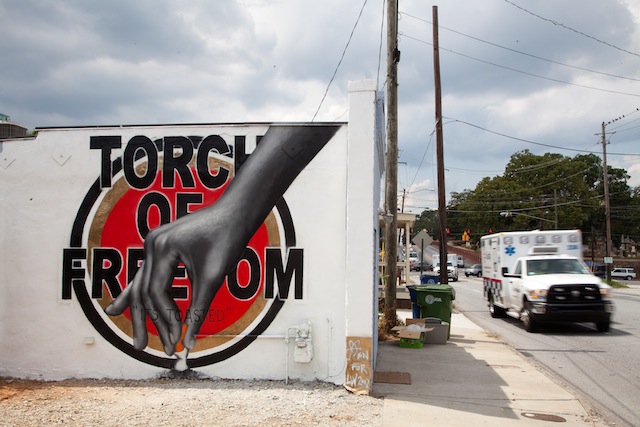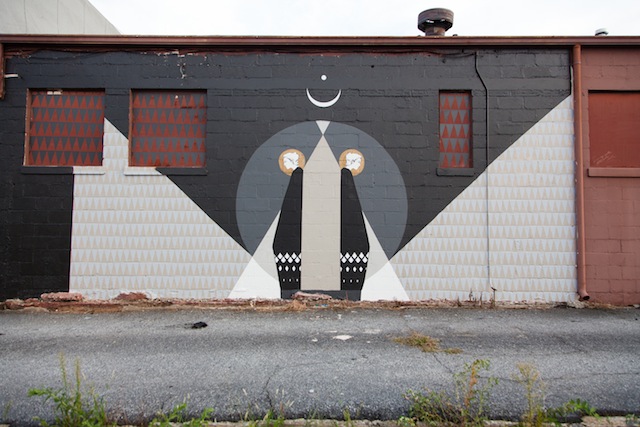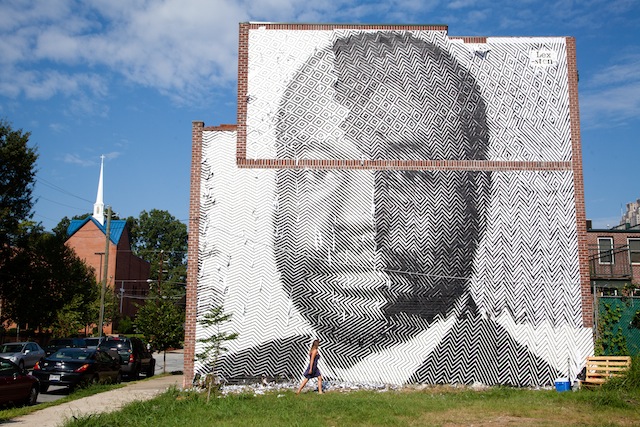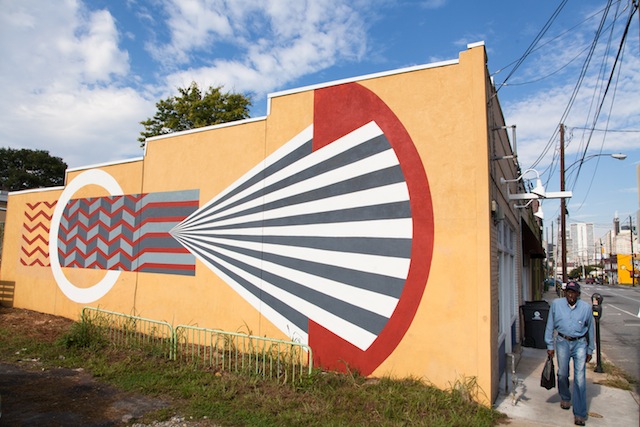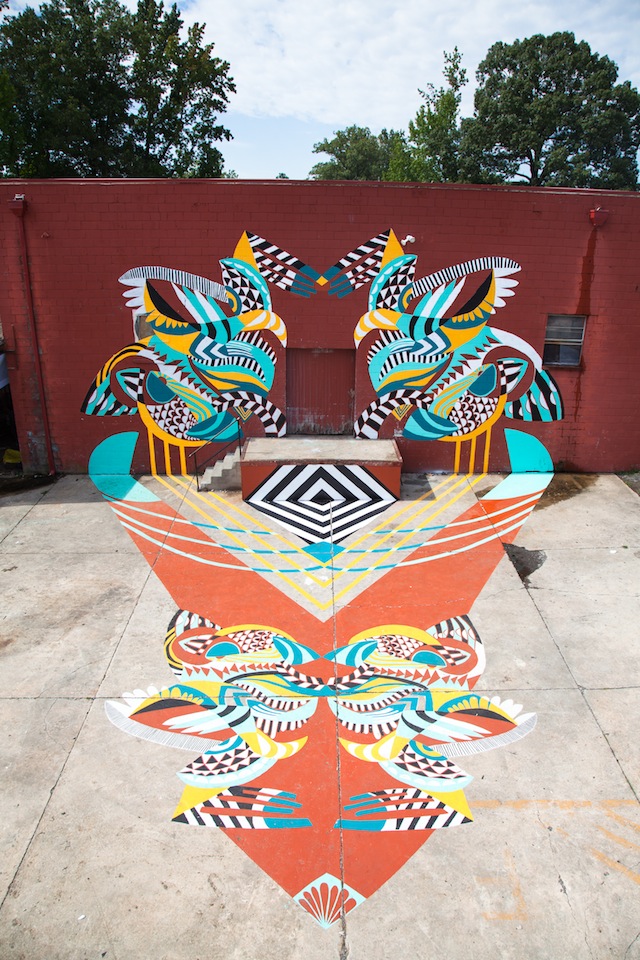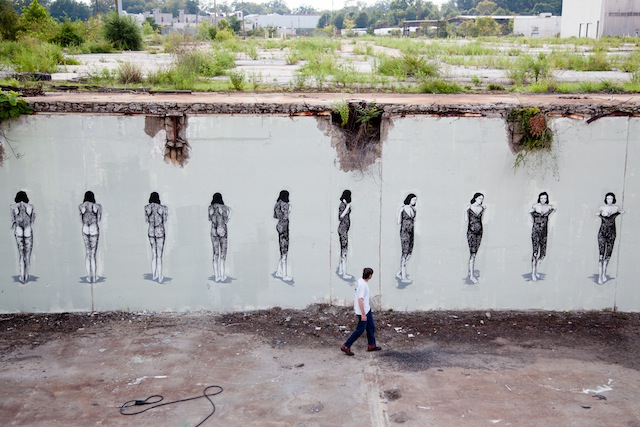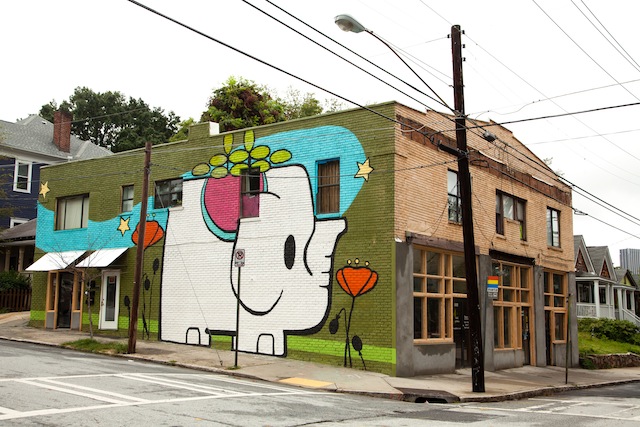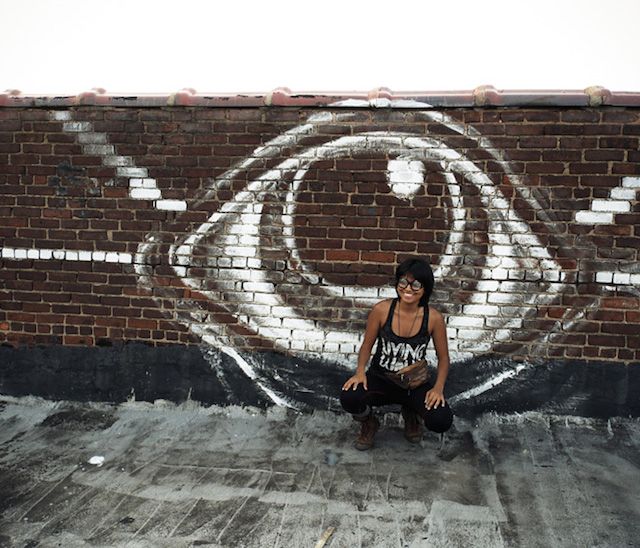
I met Mon Iker at Living Walls in 2012, when she was a muralist for the conference’s all-female year. Since then Mon has relocated to New York. Last summer, Tim Hans photographed her on a Brooklyn rooftop for his continuing series of photo-portraits of artists. I took the opportunity to reconnect with Mon and ask her a few questions over email (although I should have edited them first, note the error in question 4).
RJ: What brought you to New York?
Mon Iker: Although I’ve been in NYC off and on since 2011, last spring I received a scholarship to participate in an artist residency program at the Hemispheric Institute of Performing Arts & Politics (EMERGENYC) where I was able to study and create with world-renowned artists/activists such as the YesLab, ERRO GRUPO, and Peggy Shaw. It was extraordinary, and I’m very thankful for that opportunity, but living expenses weren’t paid so I had to find a means to make it work. Happenstance – in particular, a facebook post by the Yes Men – led me to apply for a paid internship at what appeared to be a cryptic sounding but politically minded arts studio called Not An Alternative. The residency only lasted three months, and I hadn’t planned my life that far in advance to know what I was going to do after it ended. Not An Alternative winded up being exactly what I was looking for, so I’ve decided to settle in the city to continue to work with them while also working on my own stuff.
RJ: Your mural from Living Walls 2012 is one of my favorite murals in Atlanta, but I don’t think of you as a prolific street artist. How did you end up painting on the rooftop where this photo was taken, painting with a bunch of street artists?
Mon Iker: Thanks; that means a lot to me. I enjoy what you do. Trek had come to the city and we were hanging out when he told me about a rooftop that a bunch of folks were going to paint later. Art in reclaimed space always gets me excited, so I hopped on board. I ran into LNY, whom I’ve known since Living Walls, and met Icy & Sot, ND’A, Kyle Hughes Rodgers, and Vexta – all incredibly friendly people. I actually didn’t have any tools on me, so freeloaded some primer white and a leftover paintbrush to make a quick doodle. Hearing about the tragedy that occurred later on that same rooftop really devastated me. My heart goes out to Icy & Sot and all those affected.
RJ: What attracts you to muralism?
Mon Iker: The idea that advertising is the only large scale visual language sanctioned in public space is revolting to me. I feel like muralism and other forms of public art are the only media with the subversive potential to rupture a culture overstimulated by an alternate reality that consumerism creates. One of the things I like to focus on in my work (as well as at NAA) is the repurposing of authoritative language; something that is exploiting all of us is especially ripe for exploitation in itself. Also, did I mention I love to paint? And, to be honest, my piece at the conference in 2012 was the first time I’d ever used spray. I feel like there’s no going back. Absolutely addicted.
RJ: What are the essential tools in your studios?
Mon Iker: I work in a variety of media, ranging from street art, paintings, and photography to performance, animation, and film. So, if I had to narrow it down: my camera, my journal, some microns, spray, and any cheap house paints I can find. I’ll still always love my oils, though. Its funny you mention “studios”, because I’ve actually been homeless for a little more than 2 years. Deciding to stay in NYC was a huge decision; one I’m glad I made because I’m finally able to set up a studio again. I’m also currently in the process of setting up a new site, publishing new work, etc.
RJ: How does New York compare to Atlanta?
Mon Iker: Although I’m not originally from ATL, it’s easy to find the arts community there. Everyone knows each other. Even so, I still never quite felt like I fit in. The support base for artists who are interested in activist/political expression doesn’t really exist there as it does in the city, and my work leans strongly in that direction. Regardless, not having my feet planted firmly in either place yet still makes me feel like a drifter. But perhaps I’ll always feel that way.
Photo by Tim Hans

